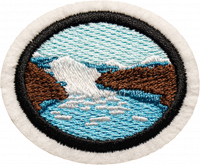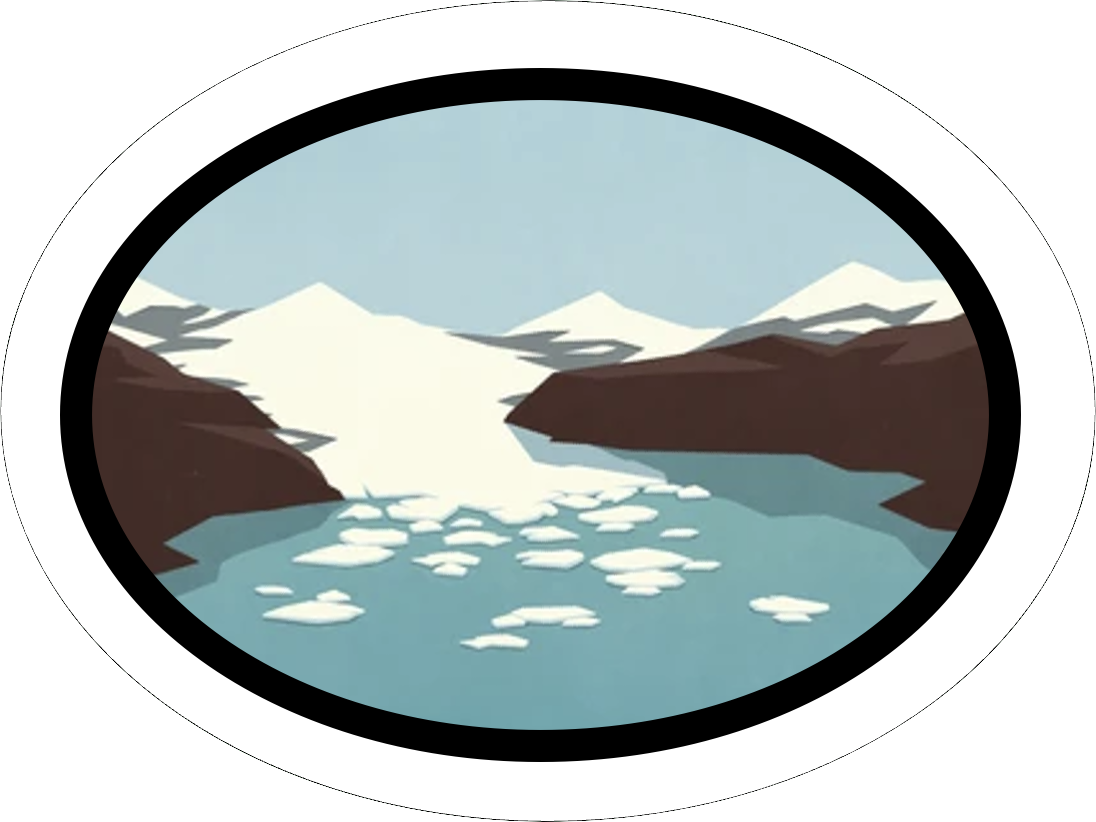AY Honor Glaciers Requirements
1. What is a glacier? Why is the study of glaciers important and how are glaciers studied today?
2. Create a game (such as a matching game, board game, trivia, etc.) that explores and defines the following terms as they relate to glaciers:
- a. Crevasse
- b. Firn
- c. Glacial drift
- d. Glacial erratic
- e. Glacial lake
- f. Icefall
- g. Kettle lake
- h. Névé
- i. Paternoster lake
- j. Plucking
- k. Serac
- l. Subglacial stream
- m. Tarn
- n. Terminus
3. How do glaciers form? Where can they be found? On a map, highlight the places glaciers can be found today.
4. Name the two major types of glaciers and two subtypes of each.
5. On a diagram of a glacier, label the following parts and how they work together to cause glacial movement:
- a. Accumulation zone
- b. Ablation zone
- c. Equilibrium line
6. Explain how a glacier advances and retreats.
7. Know the difference between valleys formed by rivers and streams, and valleys formed by glaciers.
8. Describe the two main ways in which glaciers can move.
9. Draw, photograph, model, or describe the following landforms created by glaciers:
- a. Arête
- b. Cirque
- c. Col
- d. Drumlin
- e. Esker
- f. Fjord
- g. Glacial horn
- h. Kame
- i. Nunatak
- j. Outwash fan
- k. Roche moutonnée
- l. Striation
- m. Trim line
10. What is a moraine? Name and describe three types of moraines.
11. With your class, discuss safety while on or around glaciers.
12. Evidence of glaciers that have since disappeared can still be seen all over the world. From a Biblical viewpoint, discuss with your class how these might have been formed.
13. When something is caught in a glacier, it is often preserved like a time capsule for decades or even hundreds of years, giving us great opportunities to study the past. Creatively present one of these discoveries to your group.
14. Do two of the following:
- a. Visit a glacier or a place where glaciation has occurred and discuss with your group or write a 200-word report about what you saw. Include any landforms that you saw.
- b. Watch a video about glaciers and discuss with your group or write a 200-word report about what you saw.
- c. Draw or paint a picture about something you had fun learning about while studying glaciers.
- d. Talk with your group, write about, or make a short video about a real glacier study or conservation project.


